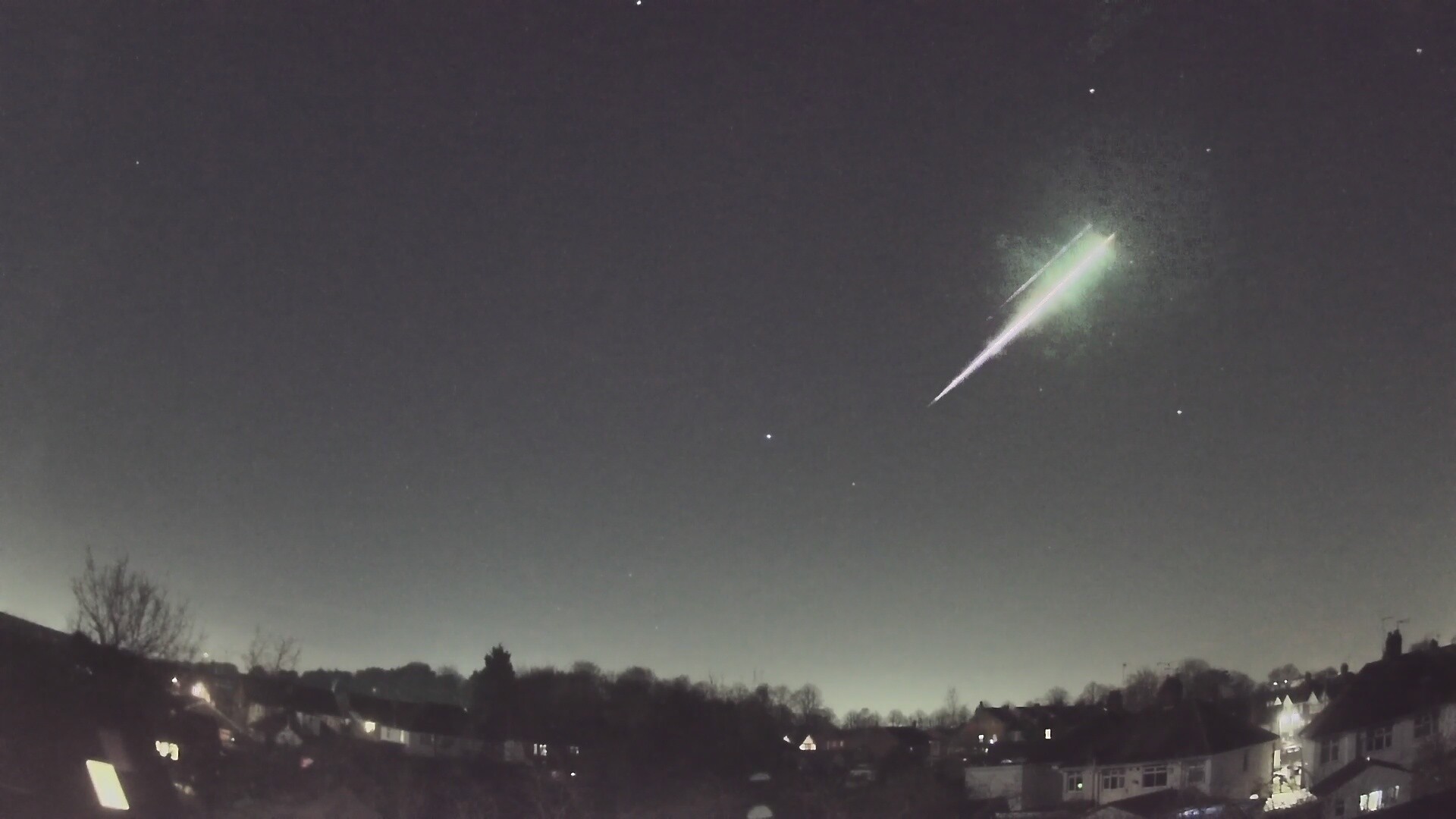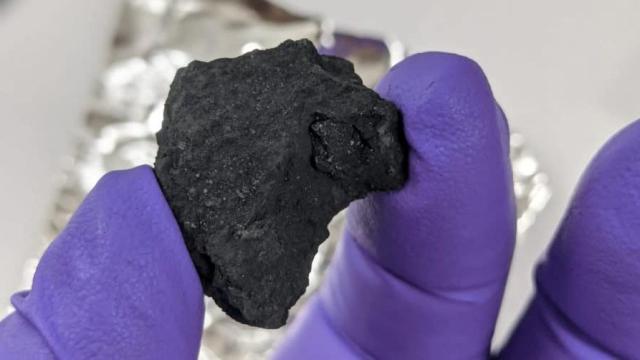A chunk of black rock dating back to the earliest days of the solar system has fallen onto a residential driveway in the UK.
Late last month, a rock weighing around 300 grams pinged onto a driveway belonging to Rob and Cathryn Wilcock, who live in the small town of Winchcombe, UK.
“When I heard it drop, I stood up and looked out the window to see what was there. But because it was dark I couldn’t see anything,” Hannah, the daughter of the couple, told the BBC. “It was only the next morning when we went out that we saw it on the drive — a bit like a kind of splatter. And in all honesty, my original thought was — has someone been driving around the Cotswolds lobbing lumps of coal into people’s gardens?”
A lump of coal, it is not. Rather, it’s a meteorite. And not just any kind of meteorite — it’s a piece of carbonaceous chondrite which, at an estimated 4.5 billion years old, dates back to the formation of the solar system, according to a statement from the University of Manchester.
“Nearly all meteorites come to us from asteroids, the leftover building blocks of the solar system that can tell us how planets like the Earth formed,” Ashley King, UK Research and Innovation Future Leaders Fellow in the Department of Earth Sciences at the Natural History Museum, said in the statement. “The opportunity to be one of the first people to see and study a meteorite that was recovered almost immediately after falling is a dream come true!”

The rare sample arrived in a blaze of glory, as the rock lit the skies above the UK and northern Europe on Feb. 28, 2021. The fireball, which entered Earth’s atmosphere at speeds reaching 14 km per second, was spotted by thousands of witnesses, many of whom reported the spectacle to the UK Meteor Observation Network.
Extensive camera footage taken of the event from different angles allowed scientists to triangulate a landing spot, and to also recreate its flight path through the solar system, according to the University of Manchester statement. Other remnants of the shattered asteroid are believed to have fallen either in the region known as the Cotswold, and a search for these valuable pieces continues.
Along with the main piece, there are other smaller fragments from the meteorite hitting the driveway. Despite being a dusty, shattered mess, the pieces are in excellent condition, and they’re being compared to pristine samples returned from space missions.
“I was in shock when I saw it and immediately knew it was a rare meteorite and a totally unique event,” Richard Greenwood, a research fellow at the Open University, said in the statement. “It’s emotional being the first one to confirm to the people standing in front of you that the thud they heard on their driveway overnight is in fact the real thing.”
Carbonaceous chondrites are formed from a combination of minerals and organic compounds, such as amino acids. By studying such ancient objects, scientists can peer back to the earliest days of the solar system, allowing them to better understand the origin of planets and water, and how the basic building blocks of life reached Earth.
“We’re absolutely thrilled that something that’s going to be so valuable to science, to the human understanding of the world and of the Solar System has happened, and that we can be a small part in it,” Rob Wilcock told BBC.
The meteorite will be moved the Natural History Museum, allowing for a formal investigation of the object.
Of the tens of thousands of known meteorites on Earth, only 51 are carbonaceous chondrites. The meteorite from February 28 is the first carbonaceous chondrite to be found in the UK, and the first meteorite sample to be retrieved in the county since 1991.
